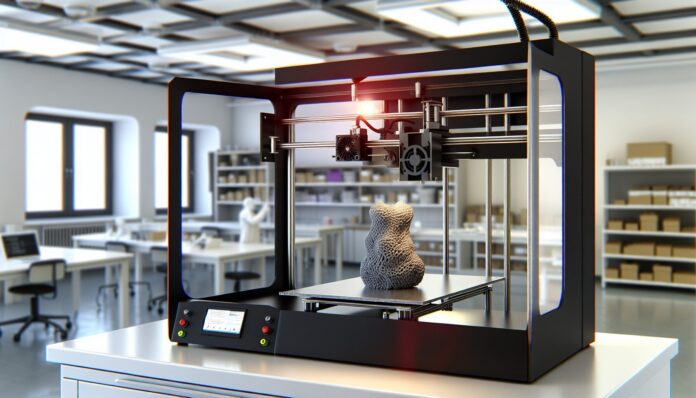Multi-material 3D printing has long promised to revolutionize manufacturing by enabling the creation of complex, functional objects in a single print. Now, a team of researchers has taken a major step forward by developing open-source software that significantly improves the efficiency and accessibility of this process.
Advancing Multi-Material 3D Printing with Open-Source Tools
Researchers from the University of Cambridge have introduced a new open-source software platform designed to streamline the process of multi-material 3D printing. This software allows users to print objects composed of multiple materials more efficiently, without the need for expensive proprietary systems or complex manual programming.
Multi-material 3D printing enables the fabrication of objects that combine different physical properties—such as flexibility, conductivity, or strength—within a single print. However, the process has traditionally been limited by the complexity of preparing print files and the lack of accessible tools for coordinating multiple print heads or extruders.
The new software addresses these challenges by automating the slicing and toolpath generation for multi-material prints. It integrates with existing 3D printers and supports a wide range of materials, making it a versatile solution for researchers, educators, and makers.
How the Software Works
The software operates by converting 3D models into machine-readable instructions that control the printer’s movements and material deposition. Unlike standard slicers, which are typically optimized for single-material prints, this tool can handle multiple materials by assigning different regions of a model to specific extruders or print heads.
Users can define material regions within a model using color-coded 3D files or by segmenting the model into separate parts. The software then generates synchronized toolpaths that ensure precise transitions between materials, minimizing waste and improving print quality.
One of the key innovations is the ability to dynamically adjust print parameters—such as temperature, speed, and extrusion rate—based on the material being used. This level of control is essential for achieving reliable results when printing with materials that have different thermal or mechanical properties.
Applications and Impact on the 3D Printing Community
This open-source solution opens new possibilities for a wide range of applications. In biomedical engineering, for example, researchers can now more easily print tissue scaffolds that combine rigid and flexible materials. In electronics, it enables the creation of embedded circuits within structural components. Artists and designers can also benefit from the ability to combine colors and textures in a single print.
By making the software freely available, the developers aim to democratize access to advanced 3D printing capabilities. This aligns with the broader open-source movement in the maker community, which emphasizes collaboration, transparency, and innovation.
“We wanted to create a tool that empowers users to experiment with multi-material printing without needing expensive equipment or proprietary software,” said one of the lead researchers. “Our goal is to lower the barrier to entry and accelerate innovation in this space.”
Looking Ahead: Future Developments and Community Involvement
The research team plans to continue improving the software based on user feedback and contributions from the open-source community. Future updates may include support for additional printer models, enhanced user interfaces, and integration with popular CAD tools.
They also hope to foster a community of users and developers who can share tips, troubleshoot issues, and contribute new features. By building a collaborative ecosystem around the software, the team believes they can drive further advancements in multi-material 3D printing.
As additive manufacturing continues to evolve, tools like this open-source platform will play a crucial role in expanding what’s possible. Whether you’re a researcher developing new materials, a hobbyist exploring creative designs, or an educator teaching the next generation of engineers, this software offers a powerful new way to bring your ideas to life.
Source: Tech Xplore

